Topics
- Article
- COVID-19
- Health & Wellness
- Respiratory Rate
Knowing Your Baseline: Case Studies in Respiratory Rate in Time of COVID-19
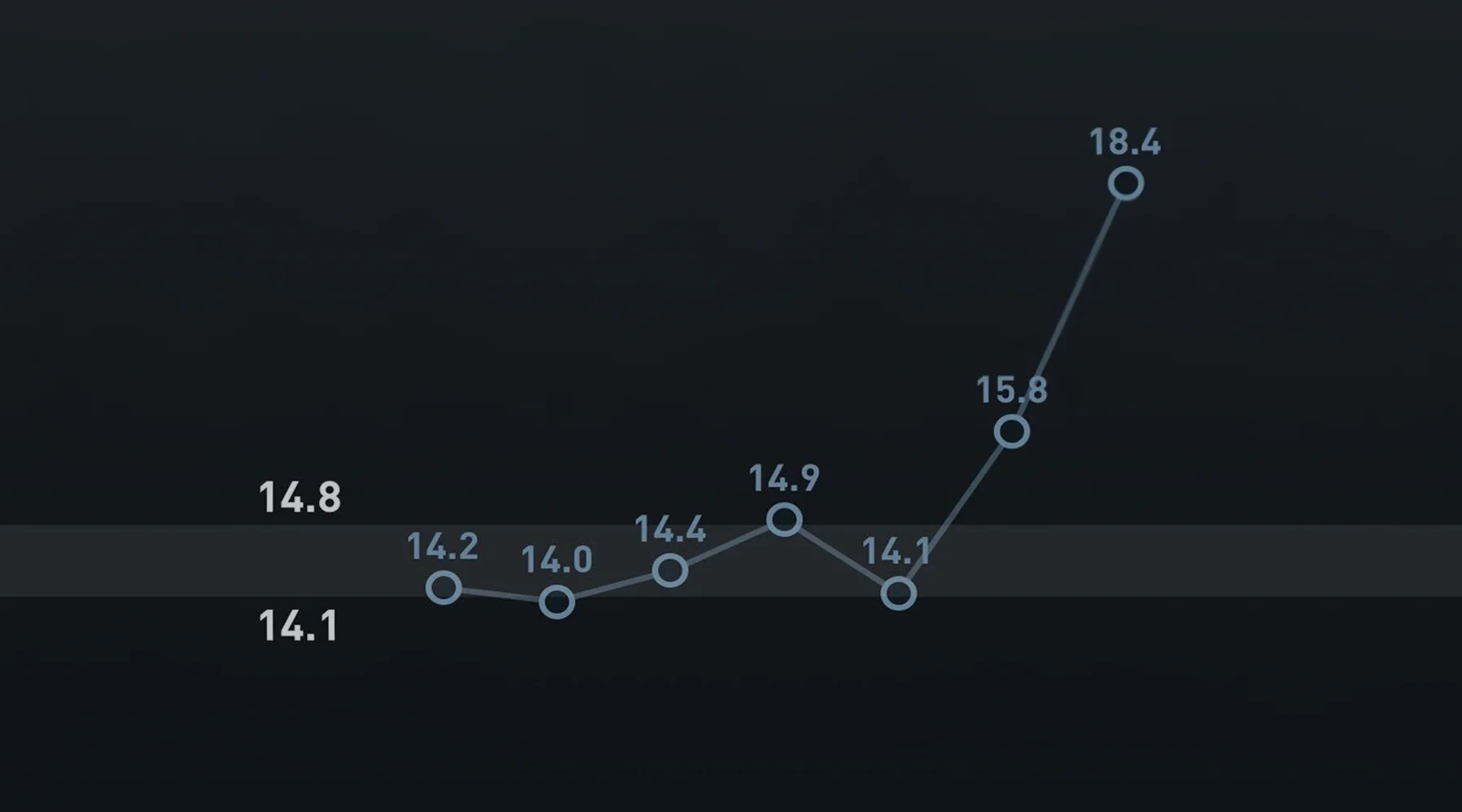
Many people experience an increase in respiratory rate prior to any other symptoms of COVID-19. Learn more about how WHOOP members are using their data.
On the morning of Friday June 19th, 2020, pro golfer Nick Watney woke up preparing to play in the second round of the PGA Tour’s RBC Heritage tournament in Hilton Head, South Carolina. He’d felt a bit “sluggish” the day before, but thought it was just because he’d been up so early--3:50 am for a 6:56 am tee time to start the tournament. As part of the Tour’s standard protocol, Nick had tested negative for COVID-19 upon arriving in South Carolina three days earlier. He felt fine when he got out of bed, and had no noticeable symptoms of any kind. “I checked the [WHOOP] data and my respiratory rate had gone up. I’m usually in the low 14s [and it had gone up] to the low 18s,” Nick told us on the WHOOP Podcast. “I took a screenshot of it (see below) and sent it to my wife and said ‘This is very alarming,’ just because I had read when [WHOOP] had analyzed data from users that had come down with COVID. It was something that jumped out. Raised respiratory rate seems like a pretty consistent tell-tale sign."
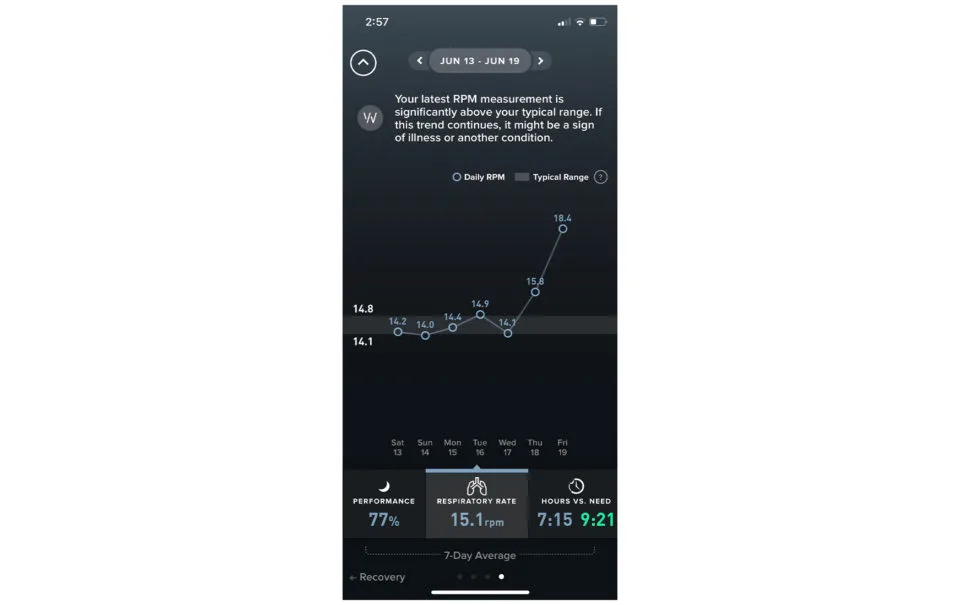
Nick immediately contacted PGA officials, got tested again, and withdrew from the tournament before his round that day when the results came back positive. He was the first PGA player to test positive for COVID-19, and without a keen knowledge of his baseline WHOOP data, Nick likely would have remained in the tournament and put numerous other people at risk.
A Changing World: Health Monitoring During a Pandemic
After word of Nick Watney’s story broke, in an effort to further protect the health and well-being of everyone on the Tour the PGA quickly moved to procure 1,000 WHOOP Straps for any players, caddies, or other essential personnel who wanted one. By the following weekend, WHOOP was widely used across the PGA Tour. Before the Tour de France, EF Pro Cycling made the decision to outfit all of its riders and staff with WHOOP to monitor their physiological data and support a return to competition on a public stage. Similarly, the University of Tennessee chose to provide WHOOP to all of its student athletes prior to taking the field again in the fall. This line of thinking soon caught on outside of the sporting world as well. Other businesses and organizations, like Tory Burch for example, turned to WHOOP to help give their employees more insight into their well-being on a daily basis.
The Science Behind Respiratory Rate and COVID-19
WHOOP measures respiratory rate during sleep using a phenomenon called Respiratory Sinus Arrhythmia. The simple explanation is that when you breathe in your heart rate increases, and when you breathe out it decreases. Typically people average between 12 and 20 respirations per minute (RPM). What stands out about respiratory rate compared to other metrics WHOOP tracks is that it’s remarkably consistent and rarely changes much from night to night. However, when it does change significantly, it is usually for a meaningful reason. And while WHOOP is not a medical device, it is the first wrist-worn wearable to have the accuracy of its respiratory rate third-party validated. When the pandemic initially began to take hold, we gave our members the ability to track COVID-19 in the app via the WHOOP Journal. We hoped to learn more about the disease from those who were eager to share their data. One of the first things that came to our attention was a frequent increase in respiratory rate prior to COVID-19 symptoms. Our Vice President of Data Science & Research Emily Capodilupo detailed the science behind it on Episode 67 of our podcast, Respiratory Rate and COVID-19:
“COVID-19 is a lower respiratory tract infection. The infected cells are the alveoli, the point of contact in your lungs to your blood. As they get damaged, your ability to get oxygen into the blood and get carbon dioxide out becomes less efficient. In order to compensate, you have to take more breaths.”
As a result of what we discovered, we fast-tracked an upgrade to the WHOOP app that made it easier for members to monitor trends in their respiratory rates. A short time later, we also updated our recovery metric (a measure of how ready your body is to perform each day) to factor in changes in respiratory rate. Learn more: The Importance of Respiratory Rate Tracking During The COVID-19 Pandemic
Data Stories from WHOOP Members
As the pandemic winds on, more and more stories from the field have poured into our channels. Our members are constantly reaching out to us in the hopes that sharing their data may benefit others. Here are just a few of those examples. Ashley Dwyer is a 31-year-old pharmacist and health coach in Ft. Lauderdale, Florida. After learning she’d been exposed to COVID-19, she got a rapid test that came back negative. Three days later she observed her respiratory rate jump by two breaths per minute above her normal baseline:
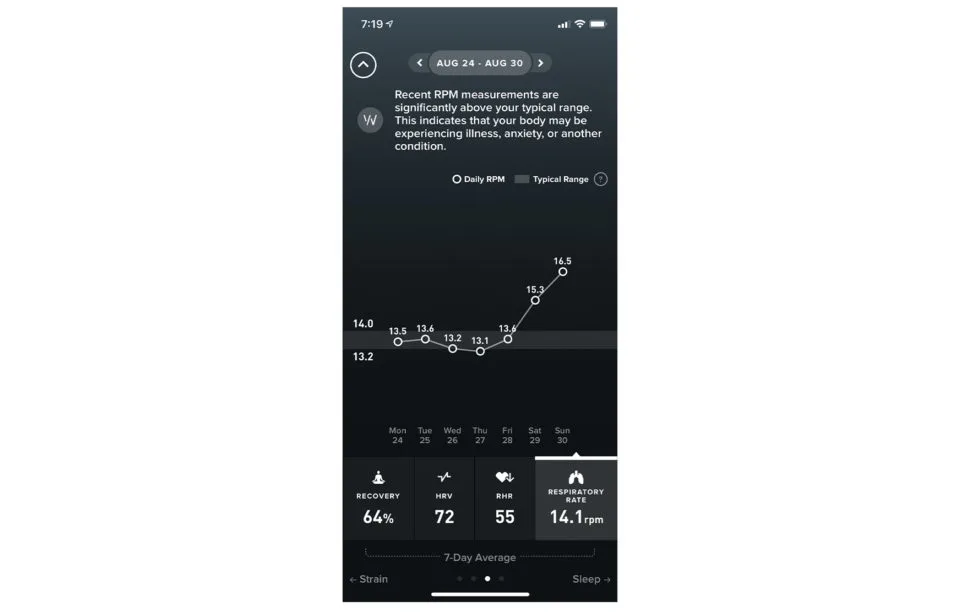
“I immediately called out of work and went to get retested, PCR this time. I was positive,” Ashley told us. “If I hadn’t had my WHOOP, I likely would have continued working that weekend in the pharmacy exposing others.” Matthew Cosgrove, 23, is a grocery store manager in Dublin, Ireland, which recently became the first European country to return to lockdown. Last month Matthew went on vacation and visited his parents. A day after learning his mother had come in close contact with someone who’d tested positive, Mathew noticed a spike of 3.2 RPM in his respiratory rate and also awoke with a recovery of 1%:
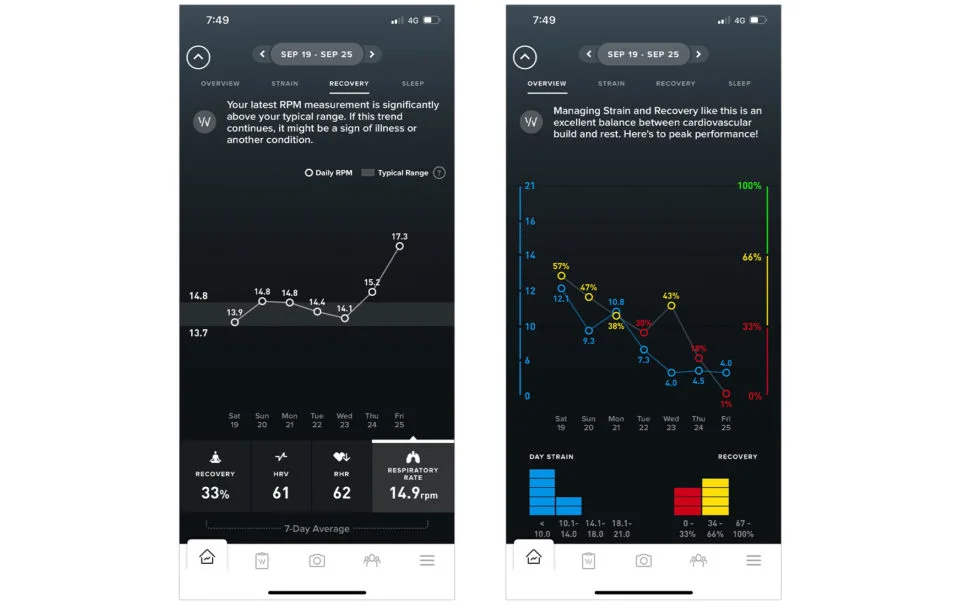
His parents first resisted his urging that they all needed to be tested, but were persuaded when he explained to them his understanding of his WHOOP data. All three tested positive, and Matthew told us that despite feeling a bit “tired and achy” that day, he had no other symptoms. And finally, the screenshots below are from an anonymous NFL player who tested positive for COVID-19 on Tuesday, June 23, 2020. In addition to a dramatic leap in his respiratory rate, his heart rate variability dropped significantly and his resting heart rate rose well above his baseline:
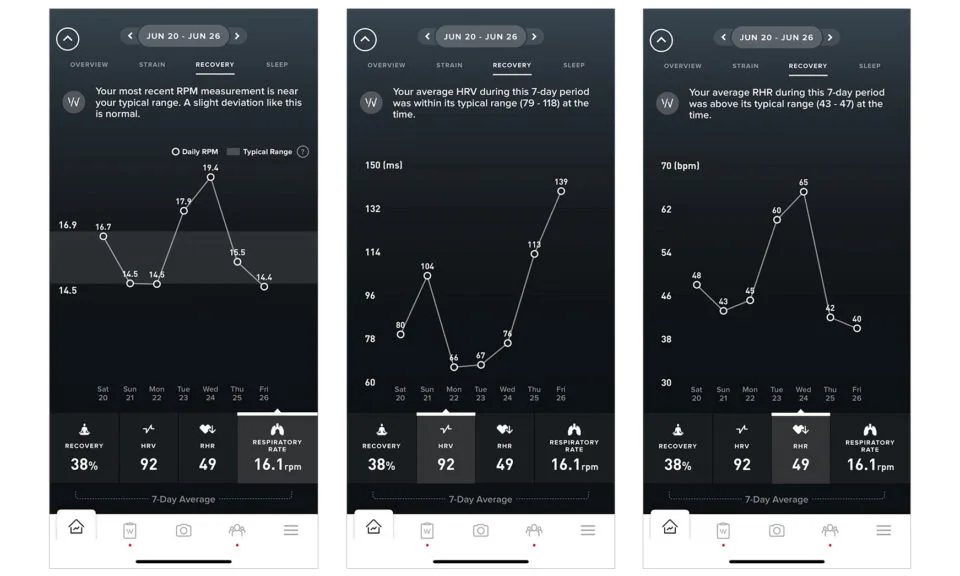
Even with a professional athlete whose numbers quickly returned to normal, there was still the meaningful uptick in respiratory rate we see so often.
Value of Knowing Your Baselines in a Time of Pandemic
As you can see in the instances above, there is value in tracking your respiratory rate on a daily basis and being well aware of what your baseline metrics are. In fact, one WHOOP member who recently noticed substantial abnormalities in his data thought he might have contracted COVID-19, but after seeking medical attention was alerted to the fact that he’d actually had a heart attack. “Understanding my WHOOP data helped save my life,” he told us. In the current state of the world, 24/7 knowledge of your physiological data is a very powerful thing. With the pandemic ongoing and cold and flu season on the way, it becomes of even greater importance. It’s also worth noting that unlike COVID-19 (which is a lower respiratory tract infection) the flu and seasonal allergies generally impact tissues in your upper respiratory tract and do not cause major fluctuation in respiratory rate. As we continue to learn more about the impact COVID-19 has on WHOOP data, we’re working hard to make our findings as beneficial to our members as we can. We’ve submitted research for peer review and publication on the utility of wearable technology in providing early warning signs of potential COVID-19 infections. While experts in the field evaluate the study, a complete preprint of the article can be found online. UPDATE: Our paper Analyzing Changes in Respiratory Rate to Predict the Risk of COVID-19 Infection has been peer reviewed and published in the journal PLOS ONE. LEARN MORE: COVID-19 Research, Data & Resources - Tips for Tracking Your Health During a Pandemic The products and services of WHOOP are not medical devices, are not intended to diagnose COVID-19, the flu or any other disease, and should not be used as a substitute for professional medical advice, diagnosis or treatment. All content available through the products and services of WHOOP is for general informational purposes only.